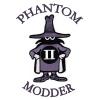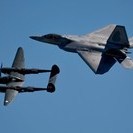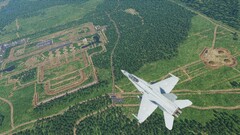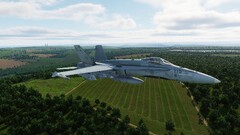- 4 replies
- 1,937 views
- Add Reply
- 5 replies
- 2,587 views
- Add Reply
- 4 replies
- 2,577 views
- Add Reply
- 4 replies
- 1,596 views
- Add Reply
- 14 replies
- 3,860 views
- Add Reply
- 0 replies
- 1,047 views
- Add Reply
Russia's missile forces chief to inspect Teikovo division

By Erik,


The Topol-M mobile ballistic missile system
Russia's missile forces chief to inspect Teikovo division
01:37 10/08/2010 RIA Novosti By: Ilia Pytalev
New commander of the Russian Strategic Missile Forces (SMF) will inspect on August 10-12 the rearmament of a missile division in central Russia with new mobile missile systems.
During his first inspection as Russia's missile forces chief, Lt. Gen. Sergei Karakayev will visit the 54th Strategic Missile Division in the town of Te
Stephen Hawking: Abandon the Earth

By Erik,


Stephen Hawking: Abandon the Earth
(CANVAS STAFF REPORTS) - Theoretical physicist Stephen Hawking has some advice for the people of Earth - it's time to get off. "I believe that the long-term future of the human race must be in space," Hawking said to Big Think , a global forum that includes interviews with experts.
"It will be difficult enough to avoid disaster on planet Earth in the next hundred years, let alone the next thousand, or million. The human race shouldn't have all its
Former enemies US, Vietnam now military mates

By Erik,


American fighter jets prepare to take off from the USS George Washington,
cruising waters about 320 kilometers (200 miles) off Vietnam's central coast
in the South China Sea on Sunday, Aug. 8, 2010. Cold War enemies the
United States and Vietnam demonstrated their blossoming military relations
Sunday as the U.S. nuclear supercarrier cruised in waters off the Southeast Asian
nation's coast, sending a message that China is not the region's only big player.
(AP Photo/Margie Mason)
For
Israel concerned over Lebanese arms imports

By Erik,


Israel concerned over Lebanese arms imports
JERUSALEM, Aug. 6 (UPI) -- This week's military clash along the Israeli-Lebanese border has raised concerns in Israel about U.S. military assistance to Lebanon.
In 2009 the United States approved $100 million in assistance to the Lebanese military and the Obama administration has requested a similar amount for 2011, in addition to small increases for anti-narcotics, anti-terror and military training programs.
Since 1976 Israel had bee
China and Pakistan Push Chengdu JF-17 Fighter for Export

By Erik,


China and Pakistan Push Chengdu JF-17 Fighter for Export
By: Chris Pocock
In the same week that the Chengdu JF-17 Thunder combat aircraft made its international debut at the Farnborough airshow, the product of this co-development between China and Pakistan was offered to Indonesia. The Pakistan Defence Minister signed a defense cooperation agreement with his Indonesian counterpart in Jakarta. The list of countries that the Sino-Pakistan joint venture is targeting for sales is expanding
Azerbaijan to buy training target drones from Turkey

By Erik,


Azerbaijan to buy training target drones from Turkey
Azerbaijan will buy Turna unmanned aerial vehicles (UAVs) for training and target practice from Turkey, the Baku based ARA news agency reported on Friday.
"Negotiations on a deal are underway with Turkey," Turkish military sources were quoted as saying.
They also said a group of Azerbaijani servicemen had been trained in Turkey in how to use, operate and service the aircraft.
Turna aircraft are manufactured by Turkish Aero











